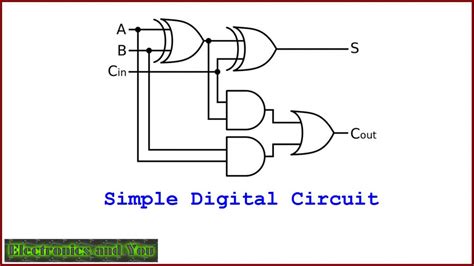Introduction to Electro Schematics
Electro schematics, also known as circuit diagrams or electrical schematics, are visual representations of electrical circuits. They use standardized symbols to depict the components and connections within a circuit, providing a clear and concise way to communicate the design and functionality of electronic systems. Understanding electro schematics is crucial for anyone involved in designing, building, or troubleshooting electrical circuits.
The Purpose of Electro Schematics
The primary purpose of electro schematics is to convey information about the components, connections, and overall layout of an electrical circuit. They serve as blueprints for engineers, technicians, and hobbyists to follow when constructing or analyzing a circuit. Electro schematics help in:
- Circuit design and planning
- Component selection and placement
- Wiring and connection layout
- Troubleshooting and maintenance
- Communication between team members
Basic Components of Electro Schematics
Electro schematics use a set of standardized symbols to represent various components in a circuit. Some of the most common components include:
| Symbol | Component |
|---|---|
| Resistor | |
| Capacitor | |
| Inductor | |
| Diode | |
| Transistor |
Understanding these symbols and their meanings is essential for reading and creating electro schematics effectively.
Creating Electro Schematics
Tools for Creating Electro Schematics
There are various tools available for creating electro schematics, ranging from traditional pen and paper to sophisticated computer-aided design (CAD) software. Some popular options include:
-
EDA (Electronic Design Automation) software: These are specialized programs designed for creating and simulating electronic circuits. Examples include KiCad, Eagle, and Altium Designer.
-
General-purpose vector graphics software: Applications like Adobe Illustrator or Inkscape can be used to create schematics, although they lack the specialized features of EDA software.
-
Online schematic editors: Web-based tools such as CircuitLab and EasyEDA allow users to create and share schematics online without the need for installed software.
Best Practices for Creating Electro Schematics
When creating electro schematics, it is important to follow best practices to ensure clarity and accuracy. Some key considerations include:
-
Use standardized symbols: Adhere to the established symbols for components to avoid confusion and ensure consistency.
-
Organize the layout: Arrange components in a logical and easy-to-follow manner, minimizing the crossing of wires and keeping related elements close together.
-
Label components and connections: Clearly label each component with its value or part number, and use descriptive names for signals and buses.
-
Provide clear power and ground connections: Make sure the power supply and ground connections are easily identifiable and consistent throughout the schematic.
-
Use hierarchical design: For complex circuits, break the schematic into smaller, more manageable subsystems using hierarchical design techniques.
Reading and Interpreting Electro Schematics
Understanding the Flow of Electricity
To effectively read and interpret electro schematics, it is crucial to understand how electricity flows through a circuit. Current, measured in amperes (A), flows from the positive terminal of a power source to the negative terminal, passing through the components in the circuit. The flow of current is always from a higher potential (voltage) to a lower potential.
Tracing the Circuit
When analyzing an electro schematic, start by identifying the power source and ground connections. From there, trace the path of current through the components, paying attention to how they are connected in series or parallel. Series connections have components connected end-to-end, with the same current flowing through each component. Parallel connections have components connected across the same two points, with the voltage across each component being the same.
Analyzing Component Interactions
As you trace the circuit, consider how each component affects the flow of current and the overall behavior of the system. Resistors limit current flow, capacitors store and release energy, and inductors oppose changes in current. Diodes allow current to flow in only one direction, while transistors can be used to amplify signals or switch currents on and off.
Identifying Potential Issues
When reading electro schematics for troubleshooting purposes, look for potential issues such as:
-
Short circuits: Unintended connections between two points in a circuit, often causing excessive current flow and damage to components.
-
Open circuits: Broken or disconnected paths that prevent current from flowing through the intended route.
-
Incorrect component values: Components with values that differ from the specified design, leading to unexpected behavior or performance issues.
-
Improperly connected components: Components wired incorrectly or in the wrong orientation, causing the circuit to malfunction or fail.

Applications of Electro Schematics
Consumer Electronics
Electro schematics are essential in the design and manufacturing of consumer electronics, such as smartphones, computers, and home appliances. They provide a roadmap for engineers to follow when creating the complex circuitry found in these devices, ensuring proper functionality and adherence to safety standards.
Industrial Automation
In industrial settings, electro schematics are used to design and maintain automated systems, such as manufacturing equipment, process control systems, and robotics. These schematics help technicians understand the interconnections between sensors, actuators, and control devices, allowing for efficient troubleshooting and maintenance.
Automotive Electronics
Modern vehicles rely heavily on electronic systems for engine management, safety features, and entertainment. Electro schematics are crucial for designing and servicing these systems, which include components such as electronic control units (ECUs), sensors, and wiring harnesses.
Aerospace and Defense
Electro schematics play a vital role in the aerospace and defense industries, where reliability and performance are paramount. They are used to design and maintain avionics systems, communication equipment, and other mission-critical electronics found in aircraft, spacecraft, and military vehicles.
Frequently Asked Questions (FAQ)
-
Q: What is the difference between a schematic and a wiring diagram?
A: A schematic focuses on the logical connections and functions of components in a circuit, while a wiring diagram emphasizes the physical layout and connections of the components. -
Q: Can I use any symbols I want when creating an electro schematic?
A: It is best to use standardized symbols to ensure clarity and consistency. Deviating from established symbols can lead to confusion and misinterpretation. -
Q: How do I become proficient in reading and creating electro schematics?
A: Practice is key. Start by studying and recreating simple schematics, then gradually progress to more complex circuits. Engage in projects, tutorials, and courses that involve schematic reading and creation. -
Q: What should I do if I encounter an unfamiliar symbol in an electro schematic?
A: Consult reference materials such as component datasheets, schematic libraries, or online resources to identify the symbol and its meaning. If still unsure, seek guidance from experienced professionals or the schematic’s creator. -
Q: Are electro schematics necessary for simple circuits?
A: While simple circuits can often be constructed without a formal schematic, creating one is still beneficial for documentation, collaboration, and future reference. Schematics help ensure the circuit is correctly designed and can be easily understood by others.
Conclusion
Electro schematics are indispensable tools for anyone working with electrical circuits. They provide a clear, standardized way to represent the components and connections within a circuit, enabling effective design, construction, and troubleshooting. By understanding the symbols, layout conventions, and best practices associated with electro schematics, you can better navigate the world of electronics and contribute to the development of innovative solutions across a wide range of industries.
As technology continues to advance, the importance of electro schematics will only grow. Embracing the skills needed to read and create these diagrams will position you for success in the ever-evolving field of electronics.
